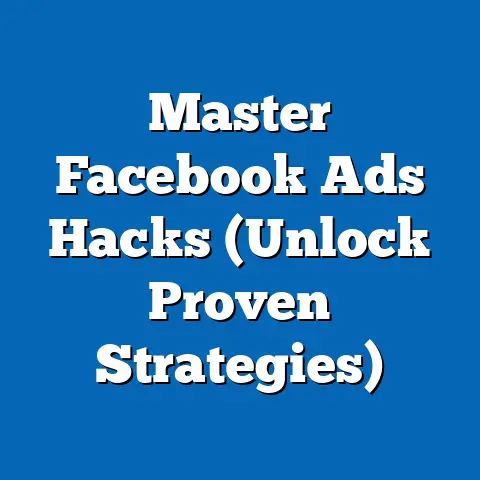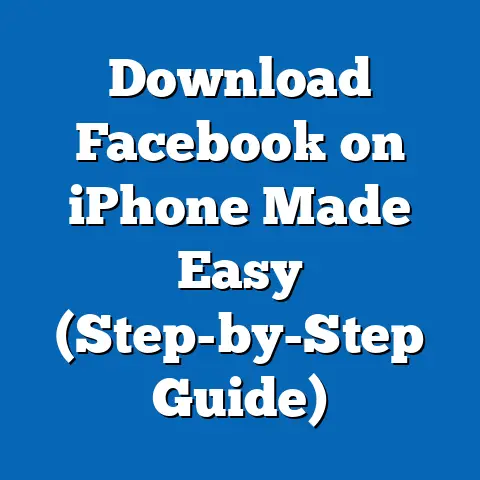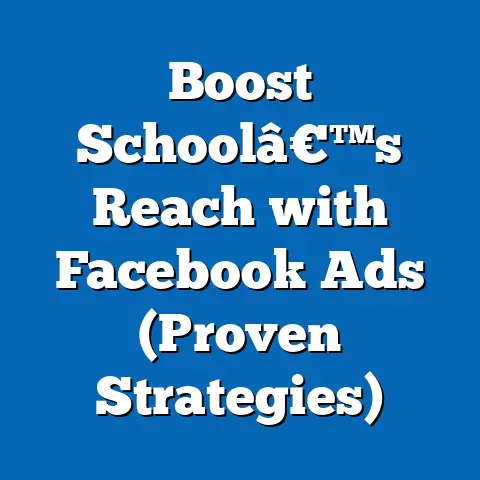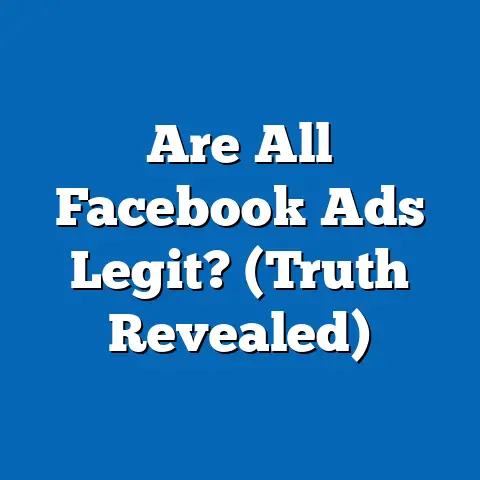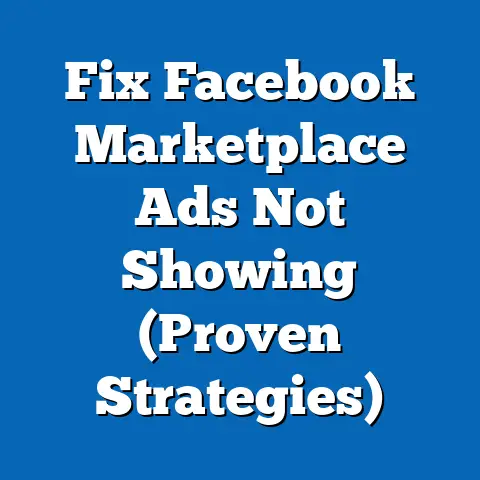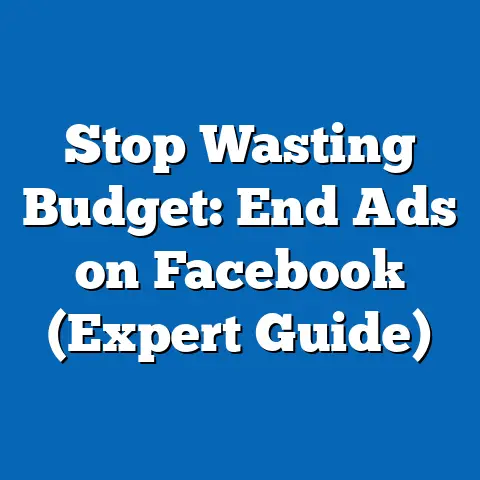Top Photo Types for Facebook Ads (Proven Strategies)
I’ve seen firsthand how a well-crafted Facebook ad can transform a struggling business into a thriving one. But here’s a truth bomb: even the most brilliant copy can fall flat without the right visuals. In my years in digital marketing, I’ve learned that the photos you choose for your Facebook ads are not just pretty pictures; they’re powerful tools that can significantly impact your customer acquisition costs and overall ROI. Think of it this way: Every pixel counts, and every ad you create has the potential to be a long-term investment.
The key to unlocking this potential lies in understanding which photo types resonate with your target audience, drive engagement, and ultimately, convert viewers into loyal customers. This article will explore the top photo types for Facebook ads, sharing proven strategies that can help you optimize your ad performance, reduce spending, and achieve sustainable growth. By the end of this guide, you’ll have a clear roadmap to selecting visuals that not only capture attention but also contribute to significant long-term savings for your business. Let’s dive in!
The Psychology Behind Visuals in Advertising
Before we jump into specific photo types, it’s crucial to understand the psychological impact of visuals in advertising. Humans are visual creatures. I remember reading a stat once that said we process images 60,000 times faster than text. That’s insane! Think about it: when you’re scrolling through your Facebook feed, what catches your eye first? It’s almost always the images and videos, right?
Visuals have the incredible ability to evoke emotions, influence perceptions, and drive action. For example, a heartwarming image of a family using your product can create a positive association and foster trust. A vibrant and dynamic image can grab attention and generate excitement.
Studies consistently demonstrate the effectiveness of images in advertising. Did you know that ads with relevant images get 94% more views? That’s a huge difference!
Choosing the right photo type is not just about aesthetics; it’s about aligning with consumer expectations and preferences. Consider your target audience: What kind of images resonate with them? What emotions do you want to evoke? By understanding these factors, you can select visuals that speak directly to your audience and compel them to take action.
Takeaway: Visuals are processed faster than text and have a significant psychological impact on consumers. Choosing the right photo type aligns with audience expectations and drives action.
Top Photo Types for Facebook Ads
Now that we understand the psychology behind visuals, let’s explore the top photo types for Facebook ads. Each type has its unique strengths and is best suited for different scenarios.
Type 1: Lifestyle Images
Lifestyle images are all about storytelling. They depict your product or service in a real-life context, showing how it fits into your customers’ lives. I’ve found that these images are particularly effective because they create a relatable connection with the audience.
For example, if you’re selling outdoor gear, you might use a lifestyle image of a group of friends hiking in the mountains, wearing your backpacks. This image tells a story of adventure, camaraderie, and the joy of the outdoors. It’s not just about selling a product; it’s about selling a lifestyle.
Successful campaigns often use lifestyle photography to convey a sense of aspiration and inspiration. Think about Nike’s ads, which often feature athletes pushing their limits and achieving their goals. These images inspire viewers to pursue their own dreams and associate Nike with success and achievement.
Tips for using lifestyle images:
- Authenticity is key: Avoid overly staged or artificial-looking photos. Aim for natural and genuine moments.
- Focus on the emotion: Capture the feeling you want your audience to associate with your brand.
- Show your product in action: Demonstrate how your product solves a problem or enhances your customers’ lives.
Takeaway: Lifestyle images tell a story and create a relatable connection with the audience by depicting your product in a real-life context.
Type 2: Product Close-Ups
Product close-ups are exactly what they sound like: detailed shots that showcase your product’s features and benefits. I’ve learned these are particularly effective for e-commerce businesses or those selling tech products where intricate details matter.
The importance of showcasing product details through close-up shots cannot be overstated. Potential customers want to see what they’re buying before they commit to a purchase. High-quality close-ups can help them make informed decisions and reduce the risk of buyer’s remorse.
When shooting product close-ups, lighting and angles are crucial. Use soft, diffused lighting to avoid harsh shadows and highlight the product’s textures and details. Experiment with different angles to find the most flattering perspective.
Tips for using product close-ups:
- Use high-resolution images: Ensure your photos are sharp and clear, even when zoomed in.
- Highlight key features: Focus on the details that differentiate your product from the competition.
- Use consistent lighting: Maintain consistent lighting across all your product photos for a cohesive look.
Takeaway: Product close-ups showcase your product’s features and benefits, helping customers make informed purchase decisions.
Type 3: User-Generated Content (UGC)
User-generated content (UGC) is any content created by your customers, such as photos, videos, or reviews. In my experience, this is one of the most powerful forms of advertising because it’s authentic and trustworthy.
UGC provides social proof, demonstrating that real people are using and enjoying your products. It also fosters a sense of community and encourages other customers to share their own experiences.
Brands successfully leverage UGC in their Facebook ads by curating and sharing the best customer-created content. For example, GoPro often features videos and photos taken by its users, showcasing the incredible adventures and experiences that are possible with their cameras.
Tips for using UGC:
- Ask for permission: Always obtain permission before using customer-created content in your ads.
- Give credit: Acknowledge the original creator by tagging them or mentioning their name.
- Encourage participation: Run contests or campaigns that incentivize customers to share their content.
Takeaway: User-generated content provides social proof and fosters a sense of community, making your ads more authentic and trustworthy.
Type 4: Infographics
Infographics are visual representations of data or information. They are an effective way to convey complex information quickly and easily. I’ve found that these are great for educating potential customers about your product or service and highlighting its benefits.
For example, if you’re selling software, you might use an infographic to explain how your product can help businesses save time and money. Or, if you’re selling health supplements, you might use an infographic to illustrate the benefits of each ingredient.
Successful campaigns have employed infographics effectively to educate and inform potential customers. For example, Mint.com uses infographics to explain complex financial concepts in a simple and engaging way.
Tips for using infographics:
- Keep it simple: Focus on the most important information and avoid clutter.
- Use clear and concise language: Make sure your text is easy to read and understand.
- Use visuals to enhance understanding: Use charts, graphs, and icons to illustrate your data.
Takeaway: Infographics convey complex information quickly and easily, educating potential customers about your product or service.
Type 5: Videos and GIFs
While technically not photos, short videos and GIFs are increasingly popular in Facebook ads. I’ve noticed video content grabs attention and showcases products in action.
Short videos or GIFs can demonstrate how your product works, highlight its features, or tell a compelling story. They are particularly effective for products that are visually appealing or require demonstration.
Tips for using videos and GIFs:
- Keep it short and sweet: Aim for videos that are 15-30 seconds long.
- Grab attention quickly: Start with a captivating visual or hook.
- Use text overlays: Highlight key messages and calls to action.
Takeaway: Short videos and GIFs grab attention and showcase products in action, making them effective for visually appealing products.
Proven Strategies for Optimizing Photo Use in Facebook Ads
Now that we’ve covered the top photo types, let’s discuss proven strategies for optimizing your photo use in Facebook ads. These strategies can help you maximize your ad performance and achieve better results.
Strategy 1: A/B Testing Different Image Types
A/B testing involves creating two or more versions of your ad with different images and then comparing their performance. I can’t stress enough how important this is! It’s the best way to determine which image resonates best with your target audience.
To set up an A/B test for Facebook ads, follow these steps:
- Create a new campaign: In Ads Manager, click “Create” and choose your campaign objective.
- Set up your ad set: Define your target audience, budget, and schedule.
- Create your ads: Create two or more ads with different images, keeping all other elements the same.
- Monitor your results: Track key metrics such as click-through rate (CTR), conversion rate, and cost per acquisition (CPA).
- Analyze your results: Identify the ad with the best performance and use it as the basis for future campaigns.
Takeaway: A/B testing different image types helps you determine which visuals resonate best with your target audience.
Strategy 2: Utilizing Facebook’s Ad Targeting Features
Facebook’s ad targeting features allow you to reach specific demographics, interests, and behaviors. I’ve found that tailoring your visuals to specific audience segments can significantly improve your ad performance.
For example, if you’re targeting young adults, you might use images that are trendy and visually appealing. If you’re targeting older adults, you might use images that are more classic and sophisticated.
Tips for customizing visuals based on audience segments:
- Consider their interests: Use images that align with their hobbies, passions, and values.
- Use relevant language: Use text and messaging that resonates with their communication style.
- Showcase diversity: Represent different ethnicities, genders, and backgrounds in your images.
Takeaway: Leveraging Facebook’s targeting features allows you to reach specific demographics that respond well to certain image types.
Strategy 3: Analyzing Ad Performance Metrics
Monitoring key performance indicators (KPIs) is crucial for measuring the effectiveness of your ad visuals. I always tell my clients to pay close attention to metrics such as click-through rate (CTR), conversion rate, and engagement rate.
- Click-through rate (CTR): Measures the percentage of people who click on your ad after seeing it. A high CTR indicates that your image is capturing attention and generating interest.
- Conversion rate: Measures the percentage of people who take a desired action after clicking on your ad, such as making a purchase or filling out a form. A high conversion rate indicates that your image is persuasive and relevant.
- Engagement rate: Measures the percentage of people who interact with your ad, such as liking, commenting, or sharing. A high engagement rate indicates that your image is engaging and shareable.
By tracking these metrics, you can interpret them to refine future ad photo selections. For example, if you notice that ads with lifestyle images have a higher CTR than ads with product close-ups, you might consider using more lifestyle images in your future campaigns.
Takeaway: Analyzing ad performance metrics helps you interpret data to refine future ad photo selections and improve overall performance.
Strategy 4: Staying Updated with Trends
Visual trends in social media and advertising are constantly evolving. What was popular last year may not be effective today. That’s why I’m always emphasizing the importance of keeping up with visual trends to ensure your ads remain fresh and engaging.
Here are some ways to stay updated with trends:
- Follow industry blogs and publications: Stay informed about the latest visual trends and best practices.
- Monitor social media: Pay attention to the images and videos that are popular on platforms like Instagram, TikTok, and Pinterest.
- Analyze competitor ads: See what visuals your competitors are using and how they are performing.
- Experiment with new formats: Try out new image and video formats as they emerge.
Takeaway: Keeping up with visual trends ensures your ads remain fresh and engaging, maximizing their effectiveness.
Conclusion
In conclusion, the right photo types can significantly enhance your Facebook ad performance and ultimately contribute to long-term savings for your business. By understanding the psychology behind visuals, experimenting with different photo types, and optimizing your ad strategy, you can create ads that capture attention, drive engagement, and convert viewers into loyal customers.
I encourage you to experiment with the different photo types and strategies discussed in this article. Remember that the right visual approach can lead not only to immediate results but also to sustained growth and cost-effectiveness in your advertising efforts. So go ahead, try something new, and see what works best for your business! Your future self (and your bottom line) will thank you.

